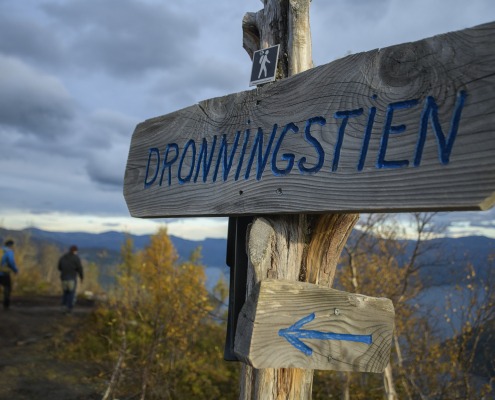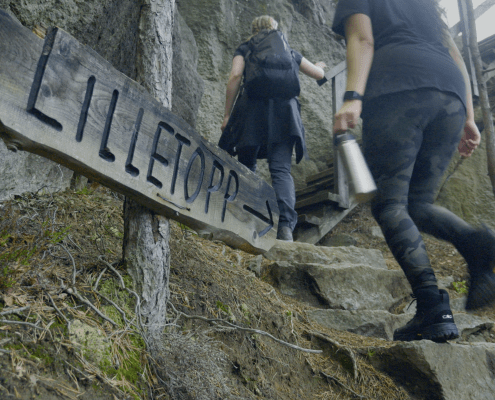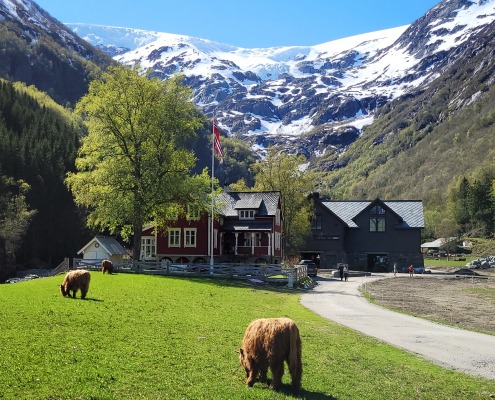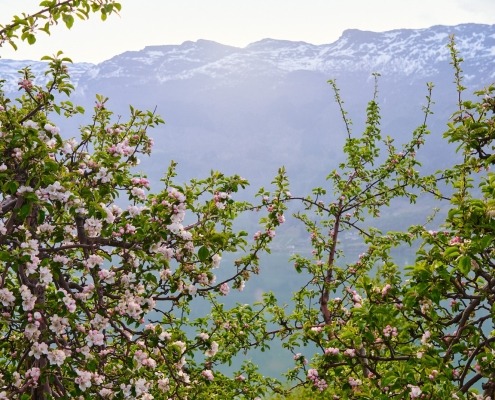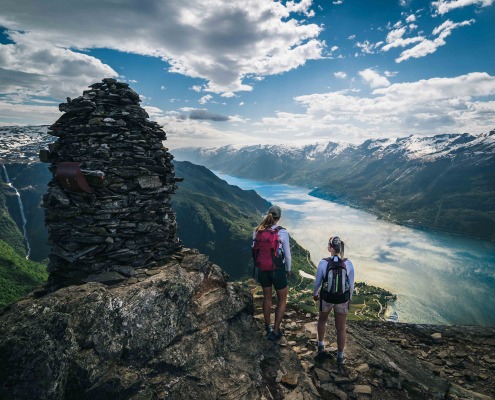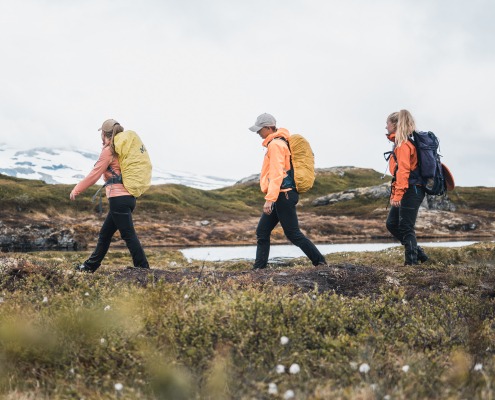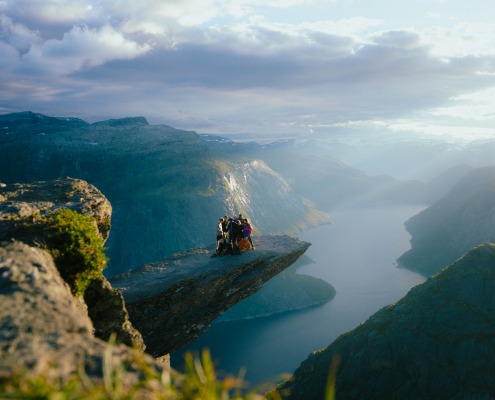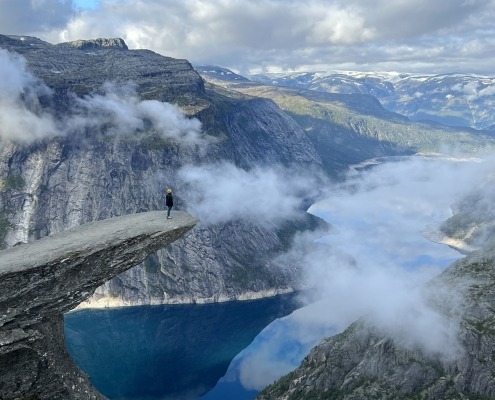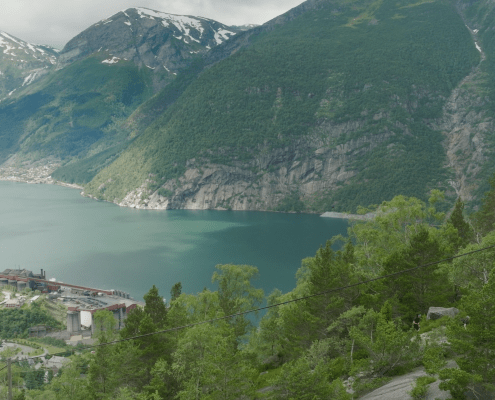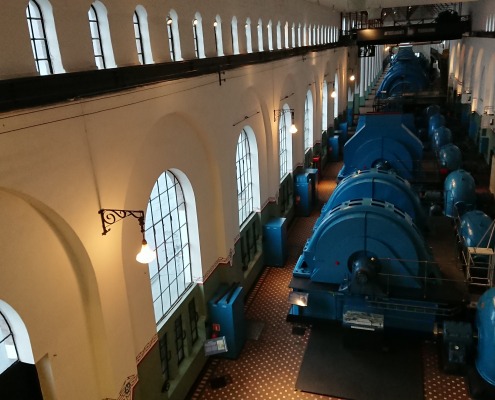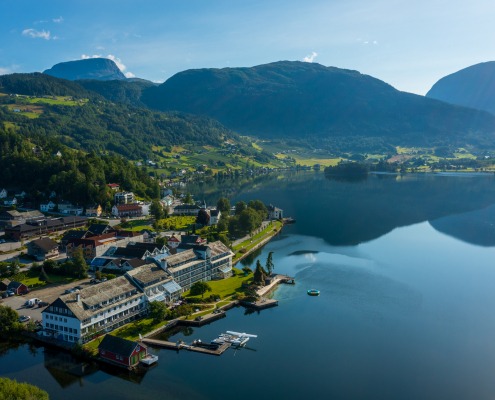Hardanger
FOR THOSE WHO SWEAR BY WORK BEFORE PLEASURE
The concept of work before pleasure is deeply ingrained in the Norwegian psyche. When each step of the hike to the Trolltunga or along the Queen’s Path leaves your quads quivering, you can look forward to a well-deserved glass of cider. Just like Norway’s Queen Sonja has done before you. Don’t worry, though, there are plenty of less strenuous peaks to reach.
Important information for hiking in Norwegian nature
- Wear waterproof hiking boots. (It wouldn’t hurt to bring an extra pair of trainers as well.)
- Bring something to eat along the way and enough water to drink.
- Remember that there may still be snow in the mountains, even in the summertime.
- Dress for the weather, but remember that the weather changes quickly at high altitude, so bring some extra clothing.

